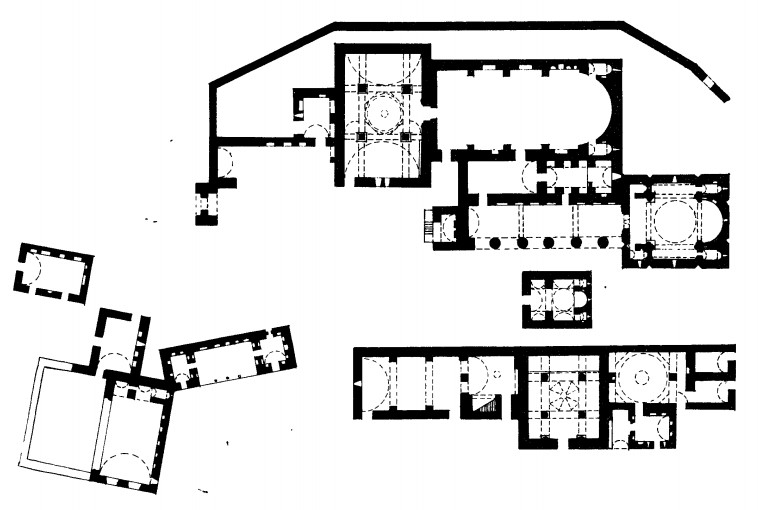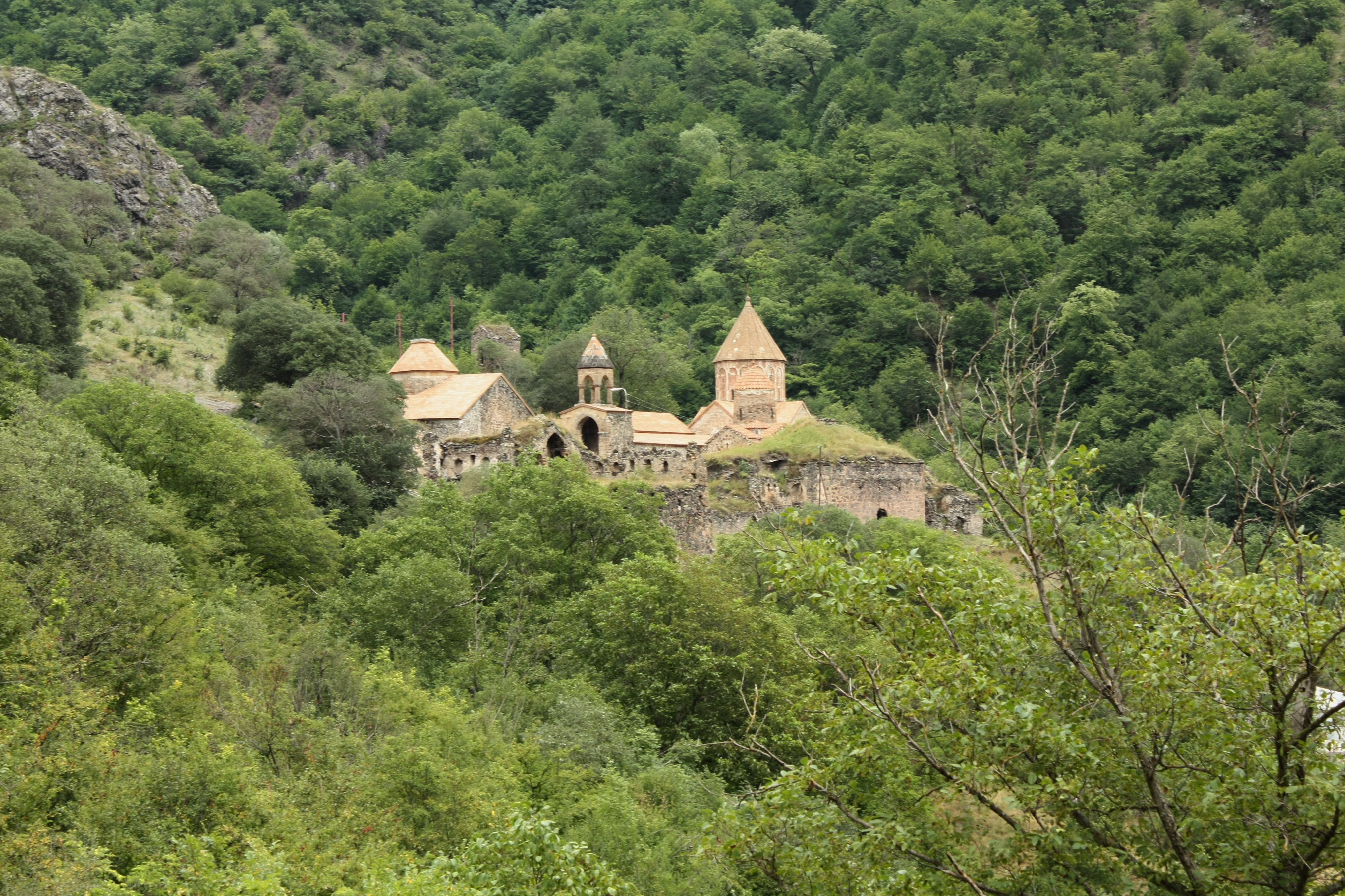|
Kəlbəcər
Kalbajar ( ; ) is a city and the capital of the Kalbajar District of Azerbaijan. Located in the Tartar Valley, it is away from the country's capital city Baku. Before the First Nagorno-Karabakh War, the city had a population of 7,246 people. It was captured by Armenia on 2 April 1993, after which its Azerbaijani population was expelled and replaced with Armenians. As part of the 2020 Nagorno-Karabakh ceasefire agreement, which ended the Second Nagorno-Karabakh War, it was returned to Azerbaijan on 25 November of that year. Etymology There are several theories about the origin of the town's name. According to Armenian sources, the name Kalbajar is a modified form of / (). The Armenian name is popularly interpreted as meaning "a place for selling rocks", as if consisting of the elements ('rock') and ('sale, selling'). Other possible etymologies consider to mean 'fortress' in this case or to be a prefix meaning settlement found in the names of some ancient Near Eastern cities ... [...More Info...] [...Related Items...] OR: [Wikipedia] [Google] [Baidu] |
Administrative Divisions Of Azerbaijan
Azerbaijan is administratively divided into 67 districts () and 11 cities () that are subordinate to the Republic. Out of these districts and cities, 7 districts and 1 city are located within the Nakhchivan Autonomous Republic. The districts are further divided into Municipalities of Azerbaijan, municipalities (). Additionally, the districts of Azerbaijan are grouped into 14 Economic regions of Azerbaijan, Economic Regions (). On 7 July 2021, President of Azerbaijan Ilham Aliyev signed a decree "On the new division of economic regions in the Republic of Azerbaijan". Administrative divisions Contiguous Azerbaijan The list below represents the districts of contiguous Azerbaijan. For those of the Nakhchivan exclave, see further below. Nakhchivan Autonomous Republic The seven districts and one municipality of the Nakhchivan Autonomous Republic are listed below. Economic regions Nagorno-Karabakh The territory of former Nagorno-Karabakh Autonomous Oblast presently ... [...More Info...] [...Related Items...] OR: [Wikipedia] [Google] [Baidu] |
Dadivank
Dadivank () or Khutavank (Dominique Auzias, Jean-Paul Labourdette, ''Petit fûté Arménie''. Paris: Nouvelles éditions de l'Université, 2005, p. 203.) is an Armenian Apostolic monastery in the Kalbajar District of Azerbaijan. It was built between the 9th and 13th centuries and is one of the main monastic complexes of medieval Armenia. In Azerbaijan, the monastery is called Dadivəng or Xudavəng. Azerbaijan denies the monastery's Armenian religious and cultural heritage, instead falsely referring to it as a "Caucasian Albanian temple." History and architecture The monastery is said to have been founded by St. Dadi, a disciple of Thaddeus the Apostle who spread Christianity in Eastern Armenia during the first century AD. However, the monastery is only first mentioned in the 9th century. In July 2007, the grave said to belong to St. Dadi was discovered under the holy altar of the main church. The princes of Upper Khachen are also buried at Dadivank, under the church's '' ... [...More Info...] [...Related Items...] OR: [Wikipedia] [Google] [Baidu] |
Kalbajar District
Kalbajar District () is one of the 66 Administrative divisions of Azerbaijan, districts of Azerbaijan. It is located in the west of the country and belongs to the East Zangezur Economic Region. The district borders the districts of Lachin District, Lachin, Khojaly District, Khojaly, Agdam District, Agdam, Tartar District, Tartar, Goranboy District, Goranboy, Goygol District, Goygol and Dashkasan District, Dashkasan districts of Azerbaijan, as well as the Gegharkunik Province, Gegharkunik and Vayots Dzor Province, Vayots Dzor provinces of Armenia. Its capital and largest city is Kalbajar. As of 2020, the district had a nominal population of 94,100. History In Turkic languages, Turkic ''Kalbajar'' means ''"Castle on the mouth of the river"''. The city of Kalbajar was renamed to ''Karvachar'' () after its occupation in the First Nagorno-Karabakh war, which corresponds to the ancient district of Vaykunik, one of 12 cantons of Artsakh (historic province), Artsakh.Robert H. Hewsen, ' ... [...More Info...] [...Related Items...] OR: [Wikipedia] [Google] [Baidu] |
Azerbaijan
Azerbaijan, officially the Republic of Azerbaijan, is a Boundaries between the continents, transcontinental and landlocked country at the boundary of West Asia and Eastern Europe. It is a part of the South Caucasus region and is bounded by the Caspian Sea to the east, Russia's republic of Dagestan to the north, Georgia (country), Georgia to the northwest, Armenia and Turkey to the west, and Iran to the south. Baku is the capital and largest city. The territory of what is now Azerbaijan was ruled first by Caucasian Albania and later by various Persian empires. Until the 19th century, it remained part of Qajar Iran, but the Russo-Persian wars of Russo-Persian War (1804–1813), 1804–1813 and Russo-Persian War (1826–1828), 1826–1828 forced the Qajar Empire to cede its Caucasian territories to the Russian Empire; the treaties of Treaty of Gulistan, Gulistan in 1813 and Treaty of Turkmenchay, Turkmenchay in 1828 defined the border between Russia and Iran. The region north o ... [...More Info...] [...Related Items...] OR: [Wikipedia] [Google] [Baidu] |
United Nations Security Council Resolution 822
United Nations Security Council resolution 822 was adopted unanimously on 30 April 1993. After expressing concern at the deterioration of relations between Armenia and Azerbaijan, and the subsequent escalation of armed hostilities and deterioration in the humanitarian situation in the region, the Council demanded the immediate cessation of hostilities and the immediate withdrawal of Armenian occupying forces in the Kalbajar Rayon, Kalbajar district near Nagorno-Karabakh in Azerbaijan. Background The First Nagorno-Karabakh War was an ethnic conflict, ethnic and territorial conflict that took place in the late 1980s to May 1994, in the enclave of Nagorno-Karabakh in southwestern Azerbaijan, between the majority ethnic Armenians of Nagorno-Karabakh backed by the Armenia, Republic of Armenia, and the Republic of Azerbaijan. As the war progressed, Armenia and Azerbaijan, both former Republics of the Soviet Union, Soviet Republics, entangled themselves in a protracted, undeclared mount ... [...More Info...] [...Related Items...] OR: [Wikipedia] [Google] [Baidu] |
United Nations Security Council
The United Nations Security Council (UNSC) is one of the six principal organs of the United Nations (UN) and is charged with ensuring international peace and security, recommending the admission of new UN members to the General Assembly, and approving any changes to the UN Charter. Its powers as outlined in the United Nations Charter include establishing peacekeeping operations, enacting international sanctions, and authorizing military action. The UNSC is the only UN body with authority to issue resolutions that are binding on member states. Like the UN as a whole, the Security Council was created after World War II to address the failings of the League of Nations in maintaining world peace. It held its first session on 17 January 1946 but was largely paralysed in the following decades by the Cold War between the United States and the Soviet Union (and their allies). Nevertheless, it authorized military interventions in the Korean War and the Congo Crisis and peaceke ... [...More Info...] [...Related Items...] OR: [Wikipedia] [Google] [Baidu] |
Human Rights Watch
Human Rights Watch (HRW) is an international non-governmental organization that conducts research and advocacy on human rights. Headquartered in New York City, the group investigates and reports on issues including War crime, war crimes, crimes against humanity, Child labour, child labor, torture, human trafficking, and Women's rights, women's and LGBTQ rights. It pressures governments, policymakers, companies, and individual abusers to respect human rights, and frequently works on behalf of refugees, children, migrants, and political prisoners. The organization was founded in 1978 as Helsinki Watch, whose purpose was to monitor the Soviet Union's compliance with the 1975 Helsinki Accords. Its separate global divisions merged into Human Rights Watch in 1988. The group publishes annual reports on about 100 countries with the goal of providing an overview of the worldwide state of human rights. In 1997, HRW shared the Nobel Peace Prize as a founding member of the International C ... [...More Info...] [...Related Items...] OR: [Wikipedia] [Google] [Baidu] |
Azerbaijani Refugees From Kalbajar 2
Azerbaijani may refer to: * Somebody or something related to Azerbaijan * Azerbaijanis * Azerbaijani language See also * Azerbaijan (other) * Azeri (other) * Azerbaijani cuisine * Culture of Azerbaijan The culture of Azerbaijan () combines a diverse and heterogeneous set of elements which developed under the influence of Iranian peoples, Iranic, Turkic peoples, Turkic and Peoples of the Caucasus, Caucasian cultures. Azerbaijani culture include ... * {{Disambig Language and nationality disambiguation pages ... [...More Info...] [...Related Items...] OR: [Wikipedia] [Google] [Baidu] |
Azerbaijan Soviet Socialist Republic
The Azerbaijan Soviet Socialist Republic, also referred to as the Azerbaijani Soviet Socialist Republic, Azerbaijan SSR, Azerbaijani SSR, AzSSR, Soviet Azerbaijan or simply Azerbaijan, was one of the Republics of the Soviet Union, constituent republics of the Soviet Union between 1922 and 1991. Created on 28 April 1920 when the Russian Soviet Federative Socialist Republic brought pro-Soviet figures to power in the region, the first two years of the Azerbaijani SSR were as an independent country until incorporation into the Transcaucasian Socialist Federative Soviet Republic, Transcaucasian SFSR, along with the Armenian SSR and the Georgian SSR. In December 1922, the Transcaucasian SFSR became part of the newly established Soviet Union. The Constitution of Azerbaijan SSR was approved by the 9th Extraordinary All-Azerbaijani Congress of Soviets on 14 March 1937. On 5 February 1991, Azerbaijan SSR was renamed the Republic of Azerbaijan according to the Decision No.16-XII of Supreme ... [...More Info...] [...Related Items...] OR: [Wikipedia] [Google] [Baidu] |
Kurdistan Okrug
Kurdistan Uezd, also known colloquially as Red Kurdistan, was a Soviet administrative unit within the Azerbaijan SSR that existed for six years from 1923 to 1929 and included the districts of Kalbajar, Lachin, Qubadli and part of Jabrayil. It was part of Azerbaijan SSR, with the administrative center being in Lachin. It was briefly succeeded by the Kurdistan Okrug from 30 May to 23 July 1930. History Establishment The ''uezd'' was established on 7 July 1923, by the order of the government of the Azerbaijani SSR. Sergei Kirov was appointed as its first head. The majority of Kurds in the region were Shia, unlike the Sunni Kurds of the Nakhichevan uezd and other areas of the Middle East. At the 1926 Soviet Census, the ''uezd'' had a total population of 51,426 people, with ethnic Kurds constituting 72.3% or 37,182 people. However, according to the same census, 92.5% of the population of the ''uezd'' cited Turkic (later known as Azerbaijani) as their native tongue. ... [...More Info...] [...Related Items...] OR: [Wikipedia] [Google] [Baidu] |
Kurdistansky Uyezd
Kurdistan Uezd, also known colloquially as Red Kurdistan, was a Soviet administrative unit within the Azerbaijan SSR that existed for six years from 1923 to 1929 and included the districts of Kalbajar, Lachin, Qubadli and part of Jabrayil. It was part of Azerbaijan SSR, with the administrative center being in Lachin. It was briefly succeeded by the Kurdistan Okrug from 30 May to 23 July 1930. History Establishment The ''uezd'' was established on 7 July 1923, by the order of the government of the Azerbaijani SSR. Sergei Kirov was appointed as its first head. The majority of Kurds in the region were Shia, unlike the Sunni Kurds of the Nakhichevan uezd and other areas of the Middle East. At the 1926 Soviet Census, the ''uezd'' had a total population of 51,426 people, with ethnic Kurds constituting 72.3% or 37,182 people. However, according to the same census, 92.5% of the population of the ''uezd'' cited Turkic (later known as Azerbaijani) as their native tongue. Dissolut ... [...More Info...] [...Related Items...] OR: [Wikipedia] [Google] [Baidu] |



